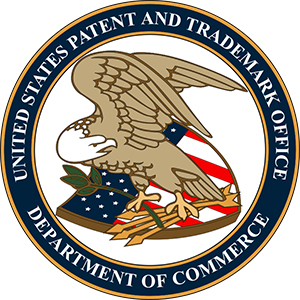Research Shows Schools Start Too Early; Some South Windsor Students Begin at 6:30 AM
/A national publication, highlighting policies that school districts around the country are experimenting with to “make schools better for kids,” suggests starting classes after 8:30 a.m. Some schools in Connecticut and across the nation are doing so, moving high school start times from earlier hours. In South Windsor, however, the experiment is in the opposite direction, with a select group of high school students beginning weekday classes at 6:30 a.m.
It's part of a new pilot plan called "zero period," created as a temporary relief for some students until the school can transition from a seven-period to an eight-period school day, Principal Daniel Sullivan recently told The Hartford Courant.
"It's not for everybody and it's not a requirement for the kids that are doing it," Sullivan said. "It's going to be tough … but they chose it because it's what they want. They're doing what they want to do and we're glad to give them that opportunity."
In other schools, the pendulum is moving the opposite way. “In order to stay healthy, adolescents need at least eight hours of sleep each night; deprivation can lad to weight gain, focus issues, lower academic performance and other problems, the article in TIME magazine points out.
“Biologically, adolescents are hardwired to stay up late, often until 11 p.m. or midnight. That’s why federal official and medical experts are calling for middle and high schools to start after – at or after 8:30 a.m.,” the magazine indicates. The Portland Press Herald recently reported that the Centers for Disease Control (CDC), the American Academy of Pediatrics and numerous studies recommend later start times for secondary education – preferably 8:30 or later. 
In more than 40 states, at least 75 percent of public schools start earlier than 8:30 a.m., according to the CDC’s report. But those numbers are changing. The idea is to improve the odds of adolescents getting sufficient sleep so they can thrive both physically and academically. Among an estimated 39,700 public middle, high, and combined schools in the United States, the average start time was 8:03 a.m., the CDC reported. In Connecticut, fewer than 5 percent of middle and high schools started at 8:30 or later, one of the lowest rates in the country.
 The CDC’s recommendations in August came a year after the American Academy of Pediatrics urged schools to adjust start times so more kids would get the recommended 8.5 to 9.5 hours of nightly rest. Both the CDC and the pediatricians’ group cited significant risks that come with lack of sleep, including higher rates of obesity and depression and motor-vehicle accidents among teens as well as an overall lower quality of life, The Atlantic recently reported.
The CDC’s recommendations in August came a year after the American Academy of Pediatrics urged schools to adjust start times so more kids would get the recommended 8.5 to 9.5 hours of nightly rest. Both the CDC and the pediatricians’ group cited significant risks that come with lack of sleep, including higher rates of obesity and depression and motor-vehicle accidents among teens as well as an overall lower quality of life, The Atlantic recently reported.
At South Windsor High School, two "zero period" courses begin at 6:30 a.m. and end at 7:15 a.m., allowing students about 10 minutes for breakfast before the start of first period at 7:25 a.m. The school day concludes at 2 p.m.
In South Windsor, the early classes are aimed primarily at sophomore intervention, special education, AP science and music and art students, according to school officials. About 25 students are participating in the pilot program as the school year gets underway. The Courant reports that similar programs have been implemented in schools on the West Coast, with mixed reactions.
In Guilford, school officials were considering revised start times in discussions late last year. But the schedule for the new school year shows the high school start time as 7:25, with middle schools beginning at 7:50 and 8:00 a.m.
This fall, students can choose from a photography and a health class. In the spring, students will have the option of business communications and physical education. Bus transportation is being provided for the students, the Courant reported. "These kids are committing to getting up early, getting here early and taking care of business,” Sullivan said, indicating that the experimental zero period is not a substitute for an eight-period school day.





 In addition to Bridgeport, Wholesome Wave operates in two dozen states and Washington, D.C. Nationwide, the organization works in collaboration with more than 70 community-based partners, reaching 40,000 underserved community members and their families, as well as thousands of farmers, according to data provided by the organization. Wholesome Wave focuses in four areas:
In addition to Bridgeport, Wholesome Wave operates in two dozen states and Washington, D.C. Nationwide, the organization works in collaboration with more than 70 community-based partners, reaching 40,000 underserved community members and their families, as well as thousands of farmers, according to data provided by the organization. Wholesome Wave focuses in four areas:

 w your firm to freely innovate, grow, and prosper.”
w your firm to freely innovate, grow, and prosper.”

 und and southbound, or eastbound and westbound).
und and southbound, or eastbound and westbound).
 enjoyable. Participating businesses must indicate how many potential visitors they hope to attract at various periods during the year. Those accepted
enjoyable. Participating businesses must indicate how many potential visitors they hope to attract at various periods during the year. Those accepted  into the signage program must annually update DOT on their visitor-traffic counts and provide related information.
into the signage program must annually update DOT on their visitor-traffic counts and provide related information.




 ho made the ultimate sacrifice. The Education Center will tell the stories of those who served and died in Vietnam through programming that will include interactive exhibits, primary source information, and educational programs.
ho made the ultimate sacrifice. The Education Center will tell the stories of those who served and died in Vietnam through programming that will include interactive exhibits, primary source information, and educational programs.





























